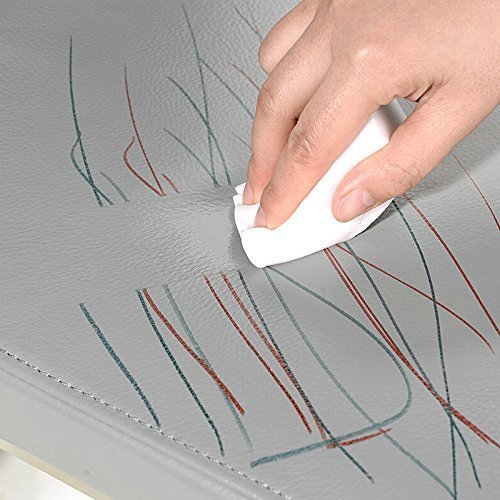Magic erasers, also known as melamine sponges, have become a staple cleaning tool in many households due to their remarkable ability to tackle tough stains and grime. However, as their popularity has grown, questions about their safety and potential toxicity have emerged. In this comprehensive analysis, we will delve into the composition, chemistry, safety concerns, environmental impact, and alternative solutions related to magic eraser, providing a thorough understanding of their implications for human health and the environment.
Understanding Melamine Foam: The Core Material of Magic Eraser
Magic erasers are primarily composed of melamine foam, a unique material with abrasive and porous properties that make it an effective cleaning agent. Melamine foam is made up of formaldehyde-melamine-sodium bisulfite copolymer, which contributes to its distinctive structure and cleaning capabilities. When the foam is moistened, its microscopic open cells create a fine abrasive surface that can effectively lift and trap dirt, grime, and stains from various surfaces. This mechanism allows magic erasers to clean without the need for additional chemical cleaners, making them appealing to consumers seeking efficient and convenient cleaning solutions.
The Cleaning Power of Magic Eraser: How They Work
The success of magic erasers in removing stubborn marks and residues lies in their abrasive nature and the unique structure of melamine foam. Unlike traditional cleaning sponges, the microscopic fibers of melamine foam create a gentle but effective scrubbing action, allowing for the removal of tough stains with minimal effort. This has made magic erasers particularly popular for tasks such as cleaning scuff marks off walls, removing soap scum from bathroom surfaces, and restoring the shine to kitchen appliances. The convenience and efficacy of magic erasers have contributed to their widespread use in households and commercial settings.
Safety Concerns Surrounding Magic Eraser
Despite their impressive cleaning power, concerns have been raised about the safety of magic erasers, particularly regarding potential risks to human health. One primary concern is the abrasive nature of melamine foam, which can pose a risk of skin irritation when in direct contact with the skin. The fine particles released during use may cause abrasions or mild irritation, especially if the user has sensitive skin or pre-existing skin conditions. Additionally, prolonged or repeated exposure to these particles may lead to skin allergies or sensitization in some individuals. It is essential for users to be mindful of these risks and take appropriate precautions when handling magic erasers.

Eye Contact and Respiratory Risks
In addition to skin irritation, there are potential risks associated with eye contact and respiratory exposure to the particles released from magic erasers. If the foam particles come into contact with the eyes, they can cause irritation and discomfort. It is crucial to avoid rubbing the eyes with hands that have been in contact with magic erasers and to seek medical attention if irritation persists. Furthermore, the fine particles generated during use can become airborne, posing a potential inhalation risk. Users should be cautious when using magic erasers in confined or poorly ventilated spaces to minimize the risk of respiratory exposure.
Child Safety Considerations
Another important aspect of the safety concerns surrounding magic erasers involves child safety. Due to their bright appearance and sponge-like texture, magic erasers may be mistaken for regular sponges or toys by young children. Ingestion or extensive contact with magic erasers can pose a risk of choking or gastrointestinal blockage in children. Therefore, it is crucial for parents and caregivers to store magic erasers safely out of reach of children and educate them about the potential hazards associated with these cleaning products.
Environmental Implications of Magic Erasers
In addition to safety considerations, the environmental impact of magic erasers is a topic of growing concern. Melamine foam is not biodegradable, which means that used magic erasers contribute to plastic waste accumulation in landfills. As consumers become increasingly conscious of the environmental footprint of household products, the long-term sustainability of single-use cleaning tools like magic erasers comes under scrutiny. Disposal challenges and the potential environmental repercussions of widely used non-biodegradable cleaning products highlight the need for sustainable alternatives and responsible waste management practices.
Disposal Challenges and Environmental Sustainability
As non-biodegradable products, used magic eraser presents challenges in terms of disposal and environmental sustainability. Once a magic eraser has reached the end of its usable life, it typically ends up in the regular waste stream, eventually adding to the burden of plastic waste in landfills. This contributes to environmental concerns around plastic pollution and waste management. The accumulation of non-biodegradable cleaning products in landfills underscores the importance of exploring more sustainable and environmentally friendly alternatives to traditional cleaning tools.
